REMEMBERING CAMP CLAIBORNE
BY RICKEY ROBERTSON
During World War II, hundreds and hundreds of young American soldiers from throughout the United States trained in the largest peacetime war games, the Louisiana Maneuvers. To house these soldiers, one of the first and the largest camps built in Louisiana was Camp Claiborne. This large camp was named after William Charles Cole Claiborne, an early governor of the Orleans Territory, the first elected governor of Louisiana. The site for Camp Claiborne was selected near the little town of Forest Hill in Rapides Parish. The site was selected due to the excellent training areas located there. Central and West Central Louisiana was basically rural and the various terrains were perfect for training infantry, artillery, armored, and engineer units. Because of this well suited area in Louisiana, the Army built four other training installations; Camp Polk, Camp Livingston, Esler Field, and Alexandria Army Air Base, all within a fifty mile radius of Camp Claiborne.
Construction began on Camp Claiborne on September 3, 1940 and ready or not, in December 1940 the 34th "Red Bull" Infantry Division began to arrive to what was actually a tent camp of 6,796 tents and only 684 frame buildings. Initially the camp was supposed to accommodate 30,000 men and officers. Immediately after opening, Camp Claiborne started to enlarge its capacity.
During the maneuvers, the camp was used as both a large logistical center for supplies, and for training units before they entered the maneuver area. Camp Claiborne became the 3rd largest city in the state of Louisiana by 1943. It was larger and had more people than the cities of Alexandria and Pineville combined. By 1942 hutments replaced the many tents that had first been erected for housing. Also by 1942 the Engineer Unit Training Center (EUTC) was activated and established in a newly opened extension of the camp on the western side of the base.
During the Louisiana Maneuvers many National Guard units came and went through Camp Claiborne. The first division to actually garrison Camp Claiborne was the 34th Infantry Division made up of National Guardsmen from Minnesota, Iowa, Nebraska, and the Dakotas. The 34th was the first division to be shipped overseas as a complete division. Private Henke of the 34th was the first American soldier to step off the troop ship in England in actual support of the war effort.
The next division at Claiborne was the 82nd Infantry Division. The 82nd was Sgt. Alvin York's old World War I unit. On August 15, 1942 the division held its first and last parade at Claiborne. While at this parade the unit was split and both the 82nd and 101st Airborne Divisions were formed into America's first airborne units. These two units jumped into Normandy on the night of June 6, 1944 as part of the D-Day Invasion of France. These two units were awarded many battle honors during World War II and even today, they remain two of the most highly trained units in the U.S. Army.
In 1942 as the 34th, 82nd, and 101st Divisions left Camp Claiborne it was garrisoned by a new division, the 103rd "Cactus" Division. The 103rd Division trained extensively at Claiborne and other areas and on November 15, 1943 it was transferred to Camp Howze, Texas. As the long convoy of the 103rd left Camp Claiborne, they passed the convoy of the 84th "Railsplitter" Division that took over the garrison at Camp Claiborne. By the time the 84th arrived, Camp Claiborne boasted its own laws, its own police force, traffic lights, a laundry, various stores, a bakery, the Claiborne-Polk Railroad that ran 40 miles to Camp Polk, a gasoline station, its own water supply and electric system, bus lines, restaurants, a post newspaper known as the Camp Claiborne News, several theaters, chapels, and service clubs. The only thing Camp Claiborne did not have was a voting booth! Soldiers were allowed to vote by mail back in their home states.
The 84th received specialized training in both amphibious landings and in glider landings yet they remained an active infantry division. During 1943 Camp Claiborne got some new and interesting residents. Both German and Italian Prisoners of War (POWs) were housed at the camp. With the base filled to capacity with American Army units, 2 compounds were built to house these prisoners. One compound was for the Germans and the other for the Italians. They were separated because the hard core German Nazi POWs did not get along with their Axis Allies, the Italians! These POWs were used on many army projects and on many farm and lumber operations throughout the Central Louisiana area.
By 1944 all the full divisions had left Camp Claiborne for the foreign battlefronts, so it now became an induction center for new recruits that were coming into the army and were being shipped to basic training camps elsewhere in the United States. Camp Claiborne became an Army Specialized Training Program (ASTP) base where all types of units and troops would train. And then by 1944 Camp Claiborne became an Infantry Replacement Center (IRC) that trained replacements for overseas combat divisions.
When World War II ended, Camp Claiborne was like many other bases throughout the United States that were closed. Camp Claiborne closed effectively in December 1945 after having trained over 500,000 men. In March 1947 the government sold over 7000 buildings of all types and sizes, plus surplus vehicles, in large public auctions.
Today all that is left of this once large scale base is miles of paved streets, a few old concrete buildings, and hundreds of building foundations. The U.S. Forest Service controls and maintains the old base; parts of the old base are used as a bomb and gunnery range by the U.S. Air Force. A couple of years ago the U.S. Forest Service erected signs at the entrance of Camp Claiborne just as they looked like in World War II. And years ago veterans of the old camp had a historical marker erected along Hwy 165. I was blessed to be the guest speaker when several photo kiosks were dedicated at the old front gate area as you enter the old base.
The many men who trained here at Camp Claiborne fought on every battlefield throughout the world in World War II. These veterans carried home their memories of Camp Claiborne and their indoctrination into the army way of life. Remember Camp Claiborne and the many that trained here for they fought for and preserved our freedom here in American that we love so dearly.
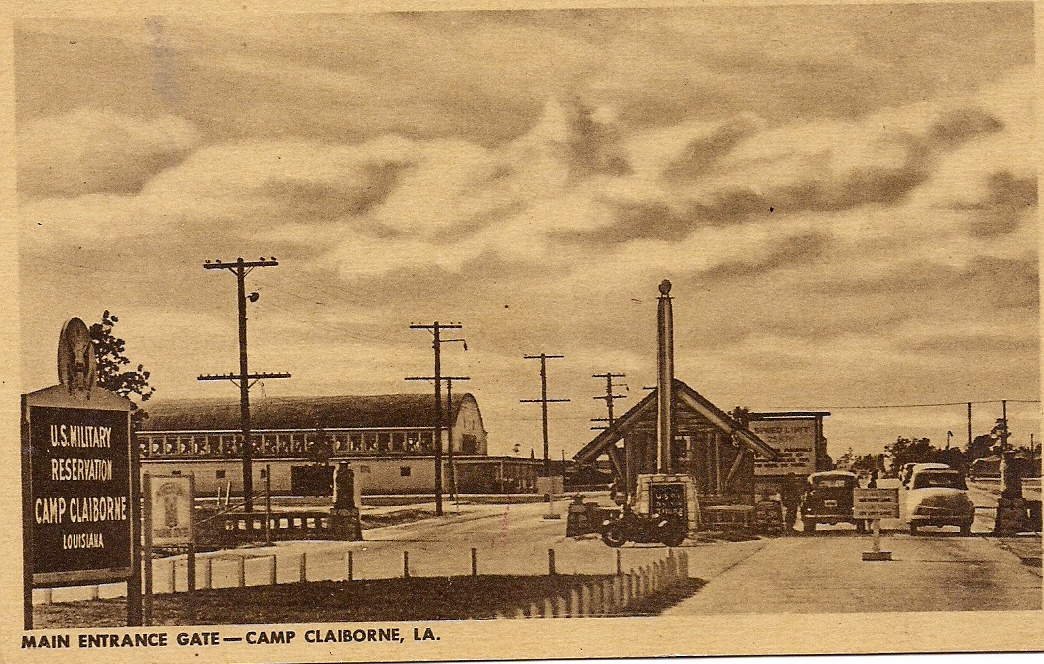
Front gate at Camp Claiborne during World War II (Robertson Collection)
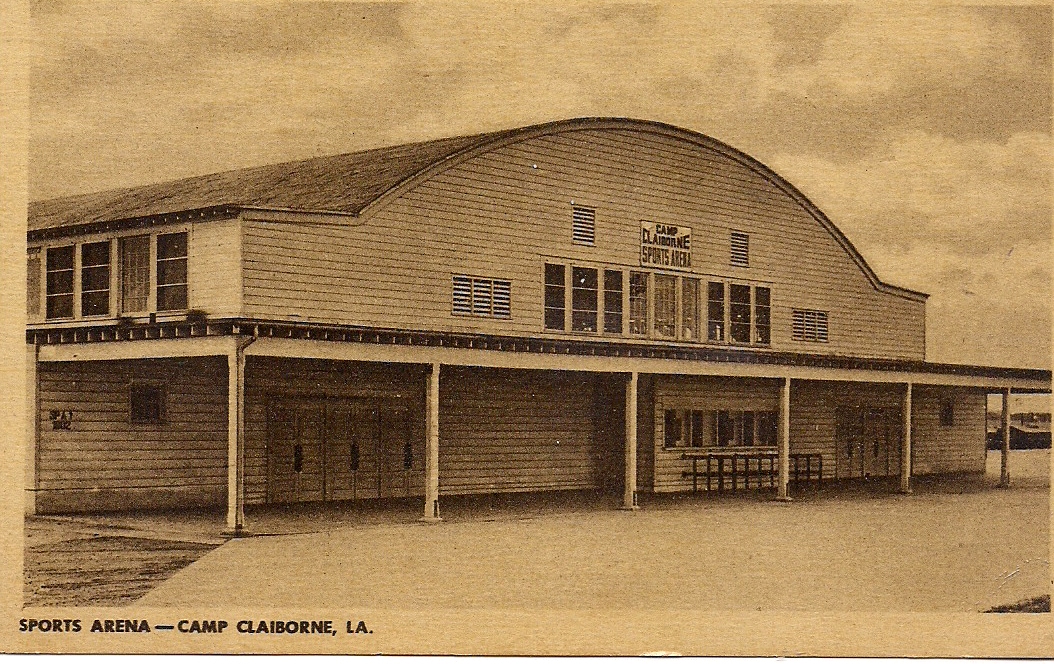
Post Field House at Camp Claiborne La. This building was moved to Dry Prong, La. and is still in use as a school gymnasium. (Robertson Collection)
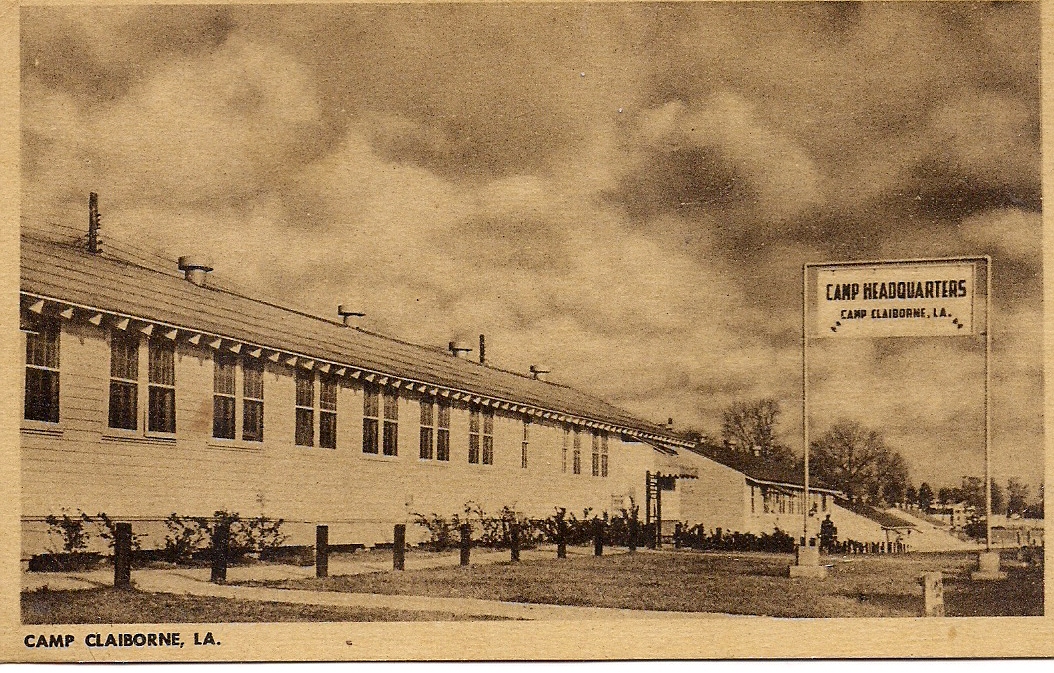
Camp Claiborne Post Headquarters during World War II. (Robertson Collection)
.jpg)
Pic0780 Location of Camp Claiborne Post Headquarters site as it looks today. (Robertson Collection)
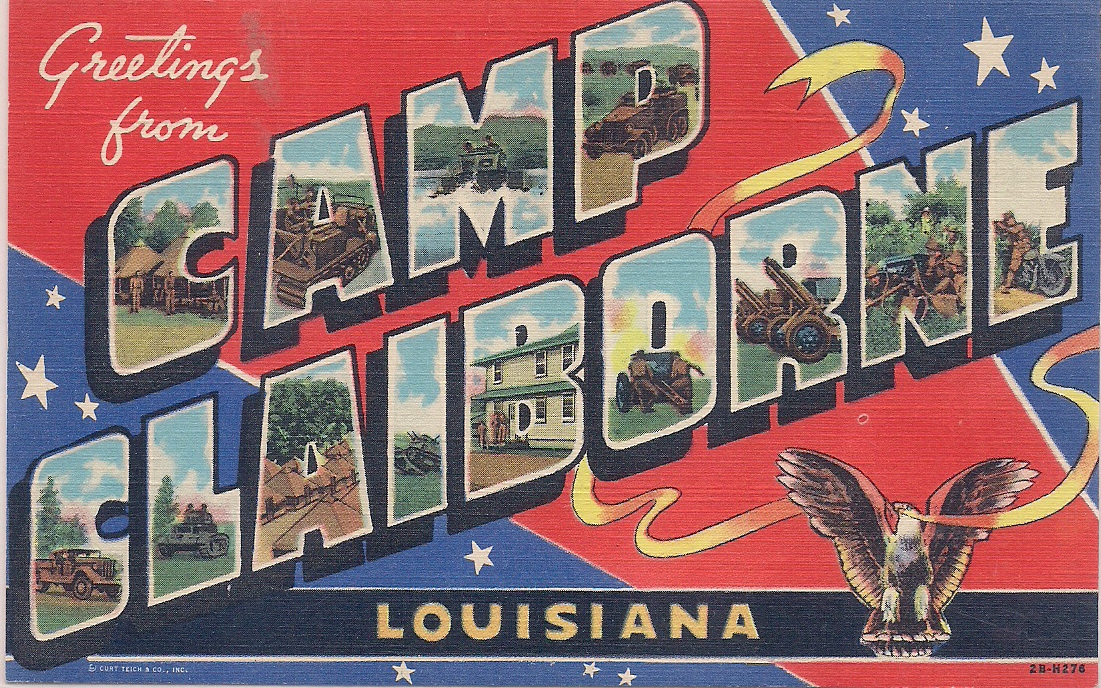
World War II postcard from Camp Claiborne, La. (Robertson Collection)
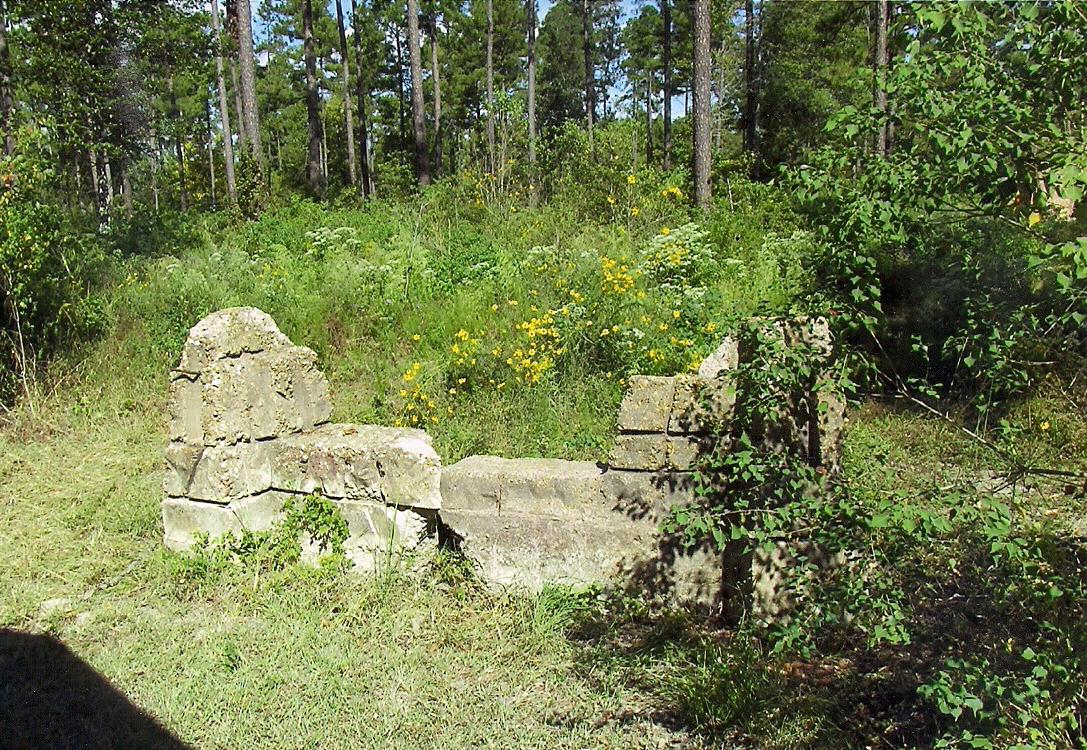
Remains of MP Station at the original front gate of Camp Claiborne. (Robertson Collection)
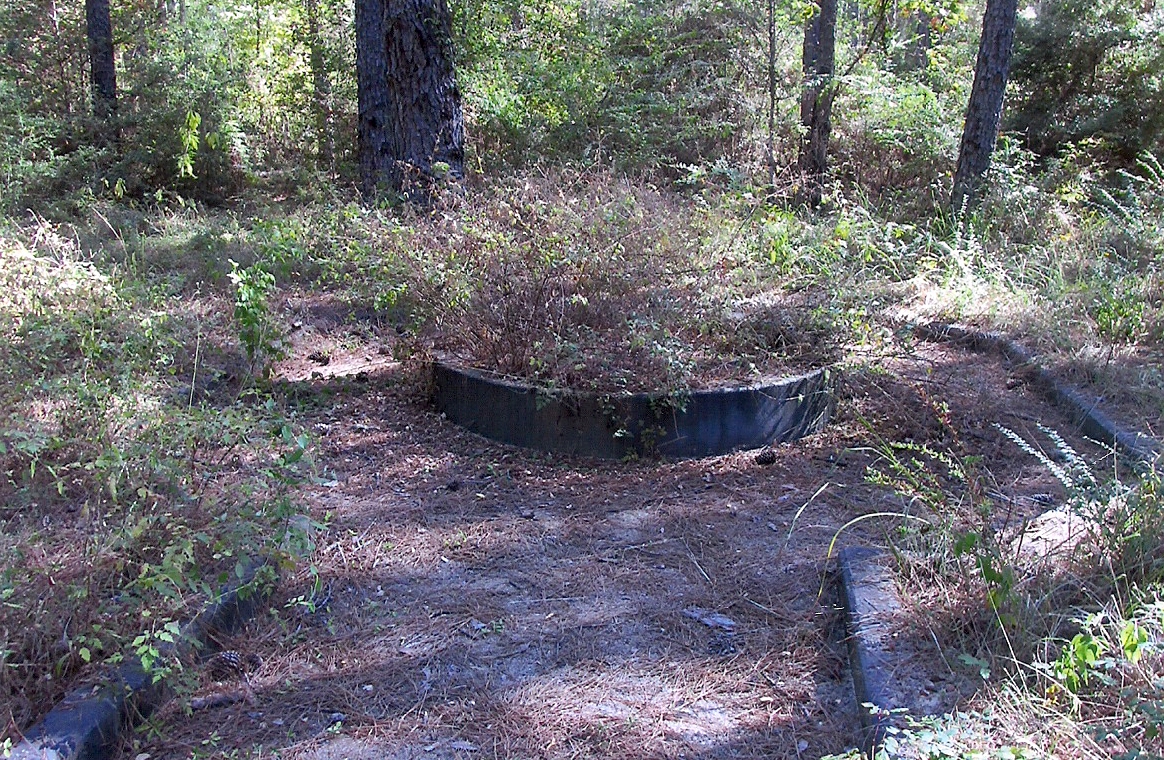
Original flagpole location at Camp Headquarters site as it looks today. (Robertson Collection)
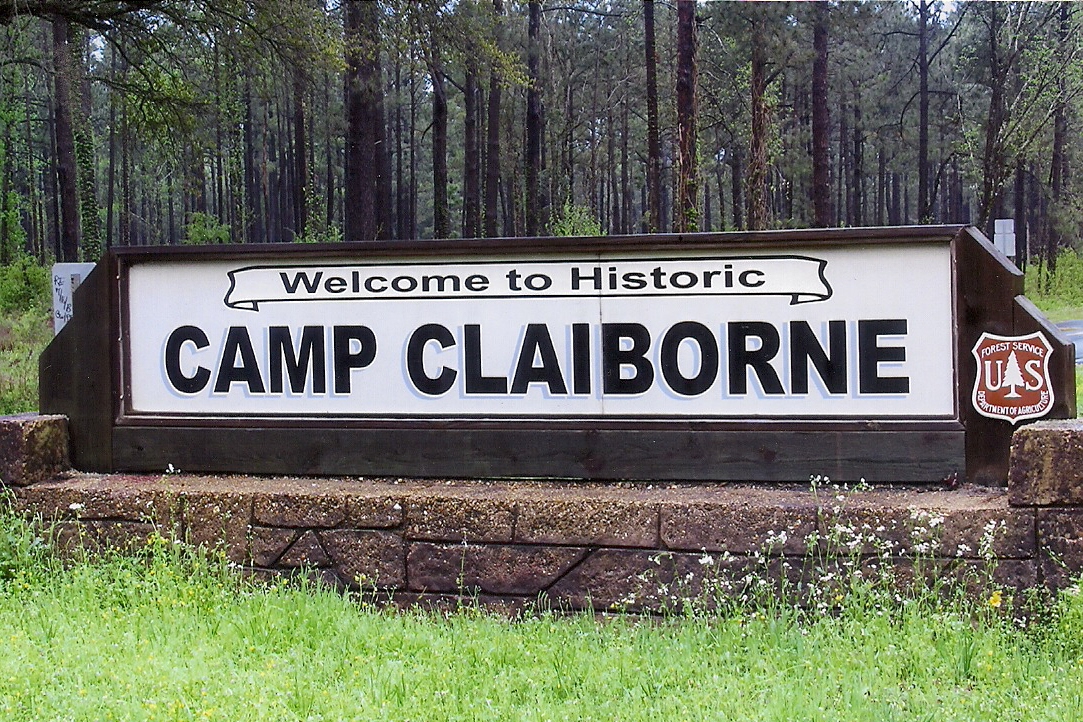
Sign erected by the U.S. forest Service at the entrance of Camp Claiborne. Sign is a replica of the original World War II sign. (Robertson Collection)
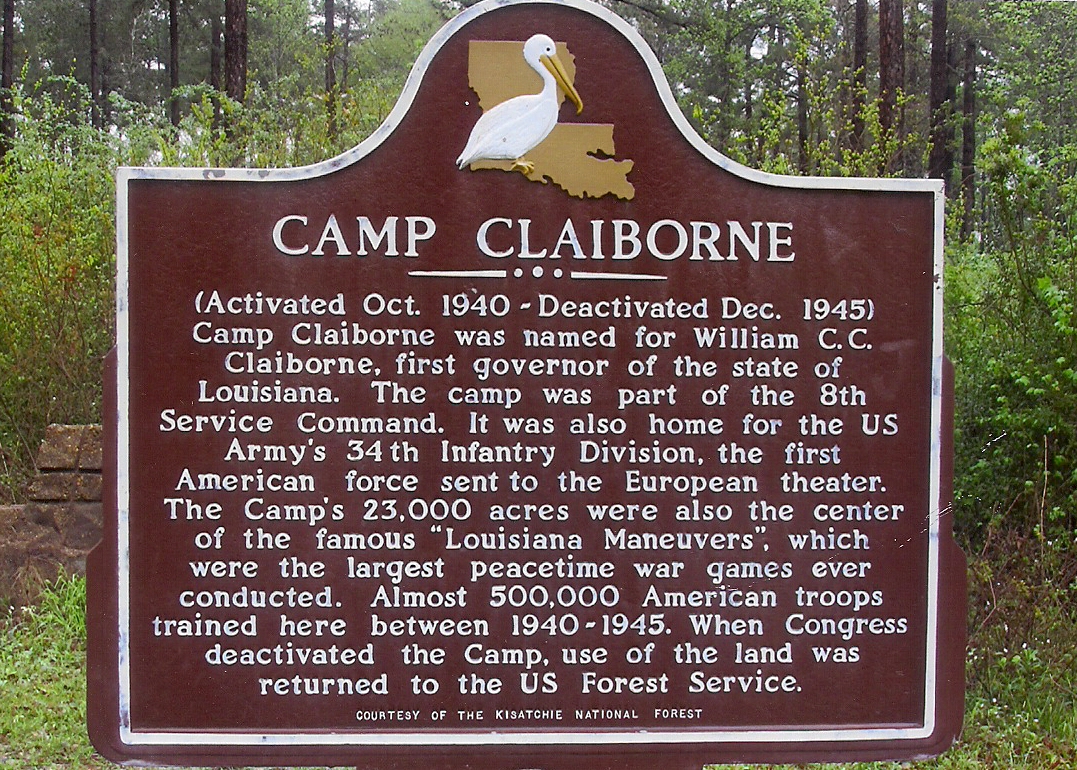
Historical marker located at the entrance of Camp Claiborne. (Robertson Collection)
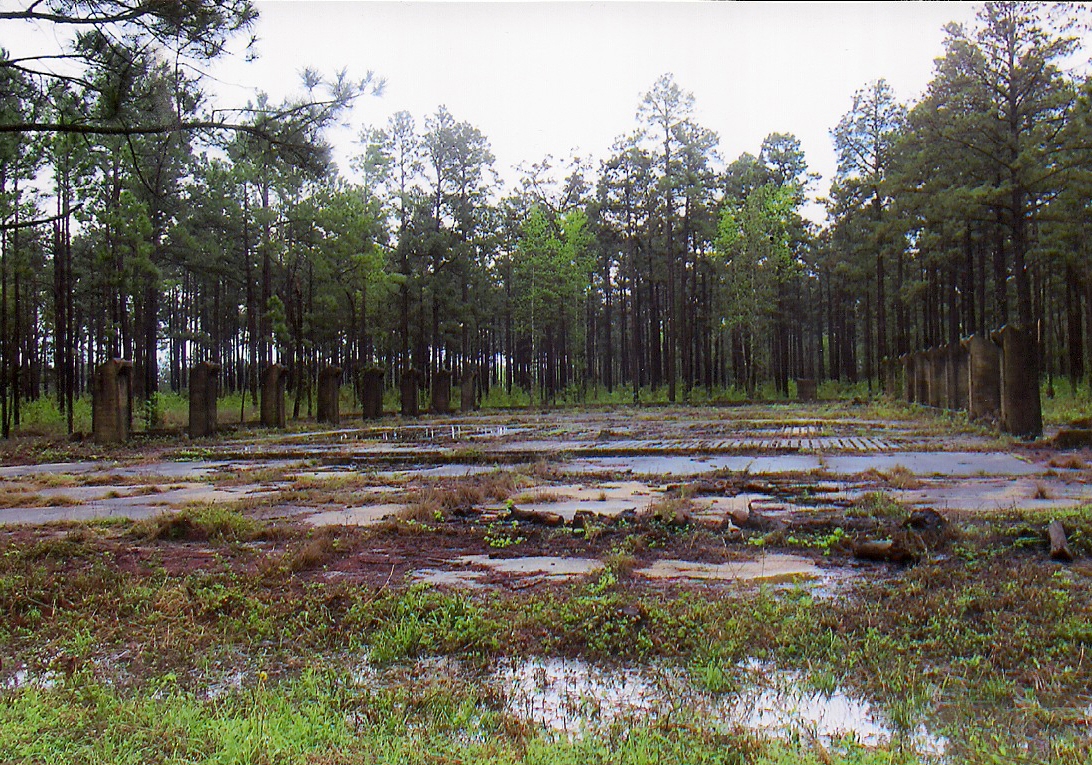
Site of the post field house as it looks today. (Robertson Collection)
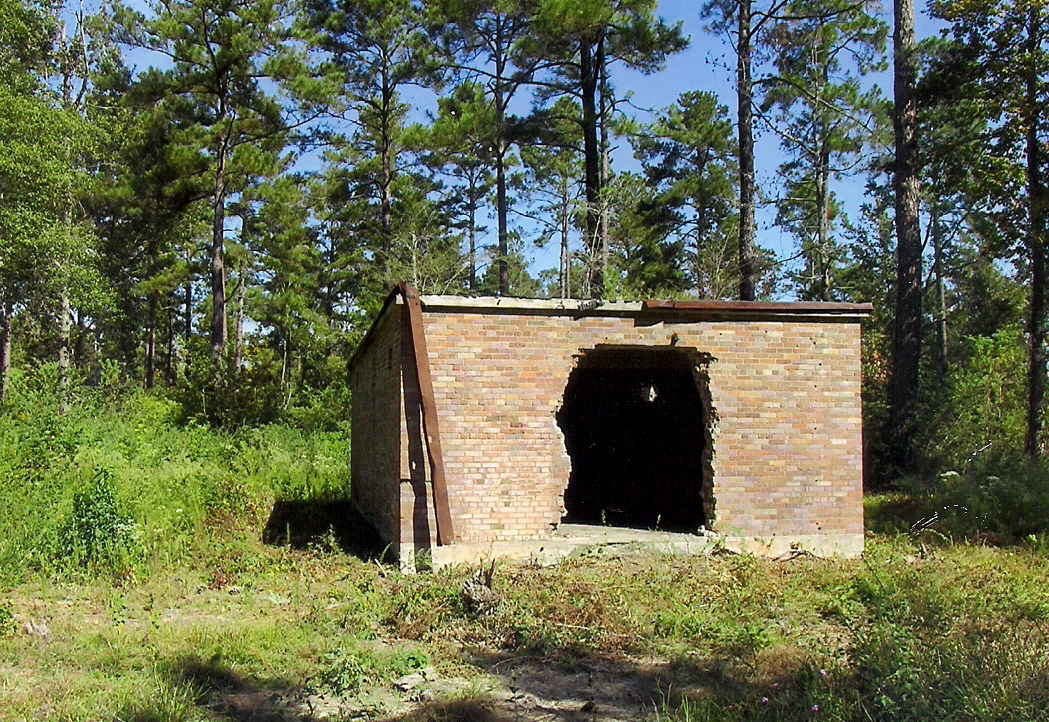
One of the few remaining buildings at Camp Claiborne is the old paymaster building. (Robertson Collection)